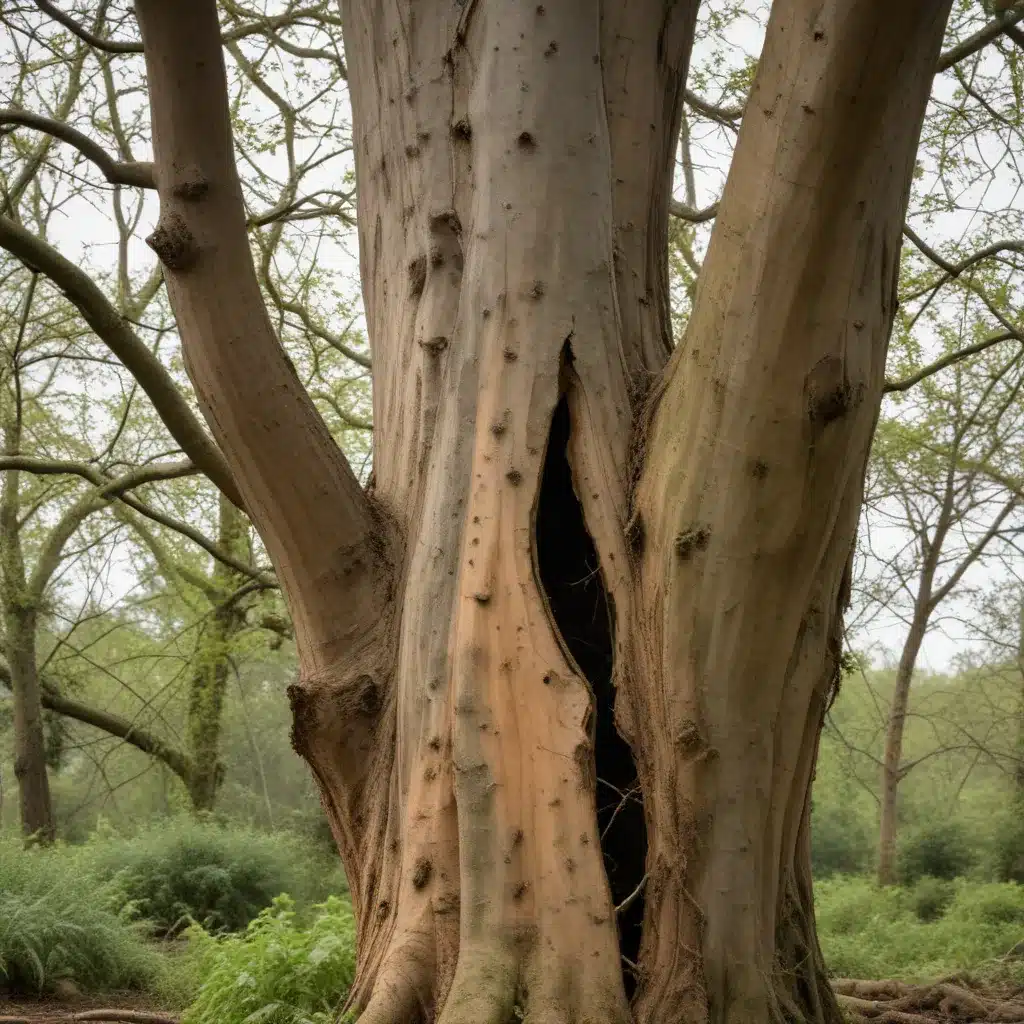
As an experienced tree care specialist here in Palm Beach County, I’ve seen firsthand the challenges and hazards that come with maintaining the health and safety of our local trees. From storm-ravaged branches to diseased trunks, there’s no shortage of potential risks that we have to address. But through diligent assessment, strategic planning, and proactive prevention, we can protect both our trees and the people who rely on them.
Assessing the Threats: A Comprehensive Approach
One of the keys to effective tree management is having a thorough understanding of the potential hazards. That’s where the International Society of Arboriculture’s (ISA) Tree Risk Assessment Qualification (TRAQ) program comes into play. As a TRAQ-certified professional, I’ve been trained to systematically evaluate the risks associated with trees using industry-standard methodologies.
The TRAQ program covers a wide range of factors, from the structural integrity of the tree to the potential consequences of its failure. By considering the likelihood of a tree or branch falling, the potential for damage, and the overall risk to people and property, we can develop a comprehensive mitigation plan tailored to each unique situation.
This holistic approach is crucial, as tree risks can arise from a variety of sources. Hazards may include unstable limbs, rot, root damage, or even the threat of natural disasters like hurricanes. By examining the full scope of these threats, we can identify the most appropriate and effective solutions.
Storm-Proofing Your Trees: Preparing for the Worst
One of the biggest challenges we face in Palm Beach County is the threat of severe weather. With the ever-present risk of hurricanes and tropical storms, it’s crucial that we take proactive steps to ensure our trees can withstand the elements.
The ISA TRAQ program provides valuable insights into assessing and mitigating storm-related risks. By evaluating factors like the structural integrity of the tree, the potential for branch failure, and the overall stability of the root system, we can identify which trees are most vulnerable to high winds and heavy rainfall.
From there, we can implement a range of strategies to fortify our trees and minimize the potential for damage. This might include pruning away weakened or overextended branches, reinforcing the root system, or even removing trees that pose an unacceptable risk.
But storm preparation isn’t just about the trees themselves – it’s also about safeguarding the people and property around them. That’s why it’s so important to have a comprehensive emergency plan in place, one that addresses everything from evacuation procedures to post-storm cleanup and recovery.
Cultivating a Safer Landscape: Proactive Preventive Measures
While dealing with the aftermath of a severe storm is never easy, the best approach is to be proactive in our tree care efforts. By taking steps to maintain the health and structural integrity of our trees year-round, we can reduce the likelihood of catastrophic failures and keep our communities safe.
One of the key elements of this proactive approach is regular tree inspections and risk assessments. As certified arborists, we’re trained to carefully examine each tree, identifying potential problem areas and developing customized maintenance plans. This might involve pruning to remove deadwood, treating for pests or disease, or even removing trees that have become too hazardous to keep.
But our job doesn’t end there. We also need to educate homeowners, property managers, and other stakeholders on the importance of proper tree care. By sharing our expertise and empowering people to be active participants in the process, we can help foster a culture of tree stewardship that benefits the entire community.
Navigating the Regulatory Landscape: Compliance and Best Practices
Of course, effective tree management doesn’t happen in a vacuum – it requires navigating a complex web of regulations and best practices. As a tree care specialist in Palm Beach County, I’m well-versed in the local and state-level guidelines that govern everything from tree removal to landscape design.
For example, the Whatcom County code outlines specific requirements for identifying and mitigating geologically hazardous areas, including those that may pose a threat to trees and surrounding structures. By understanding these standards and incorporating them into our work, we can ensure that our tree care efforts not only protect public safety but also comply with all applicable laws and regulations.
But it’s not just about checking boxes – it’s about embracing a holistic approach to tree management that prioritizes sustainability, ecological preservation, and community wellbeing. That means exploring innovative solutions like ecosystem-based mitigation plans, watershed management strategies, and collaborating with local conservation groups to achieve the best possible outcomes.
Cultivating a Greener, Safer Future: The Tree Care Specialist’s Role
At the end of the day, our work as tree care specialists is about so much more than just maintaining the health and appearance of individual trees. It’s about safeguarding the overall integrity of our local ecosystems, protecting the people and property that rely on them, and cultivating a greener, more resilient future for Palm Beach County.
Whether we’re conducting a detailed risk assessment, developing a comprehensive storm preparedness plan, or educating the community on best practices, our role is to be proactive, innovative, and unwavering in our commitment to responsible tree management. By embracing this holistic approach, we can ensure that our trees – and the communities they support – continue to thrive for generations to come.
Of course, this is no easy task, and it requires a deep understanding of the science, regulations, and practical realities of tree care. But for those of us who have dedicated our careers to this field, it’s a challenge we’re more than ready to take on.
So if you’re a homeowner, property manager, or simply someone who appreciates the value of our local trees, I encourage you to reach out to the experienced team at Tree Services Palm Beach County. Together, we can work to identify and mitigate the risks facing your trees, safeguarding the beauty, health, and safety of our shared environment.



